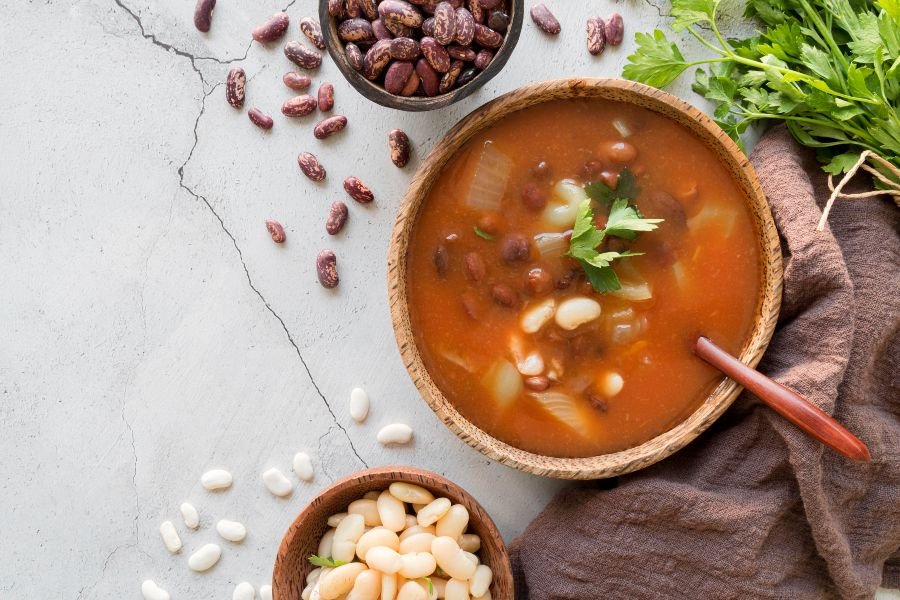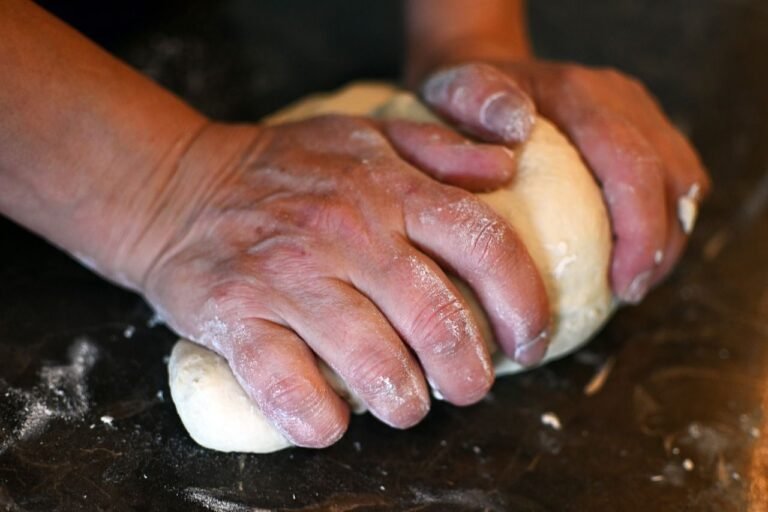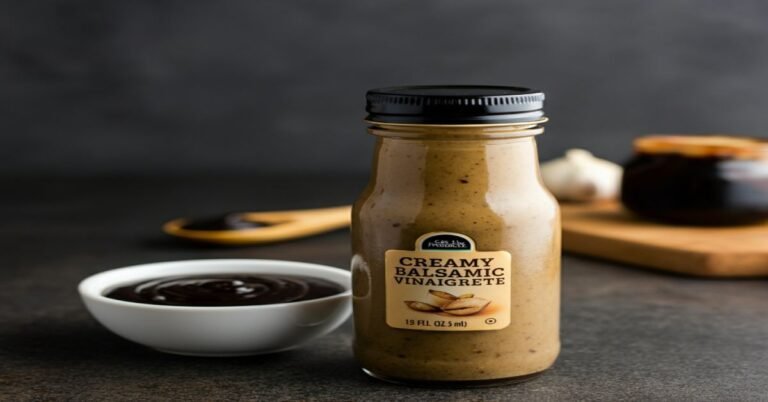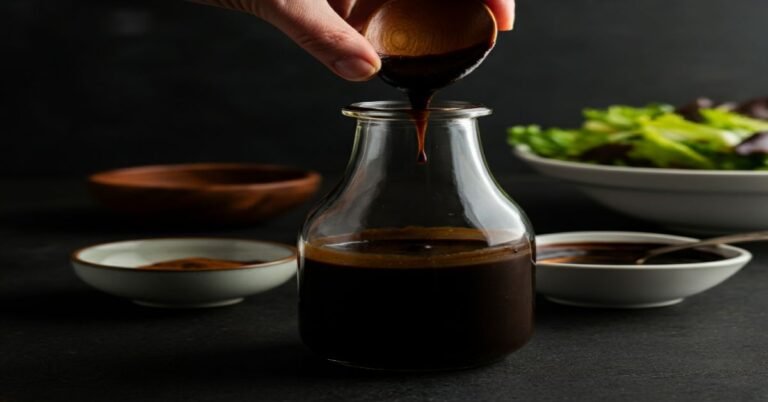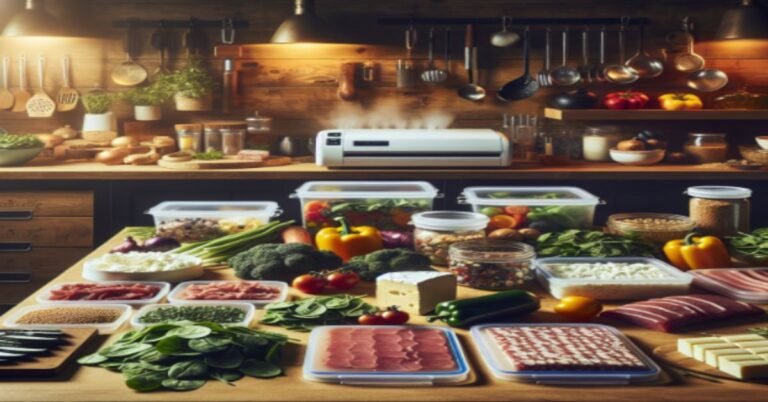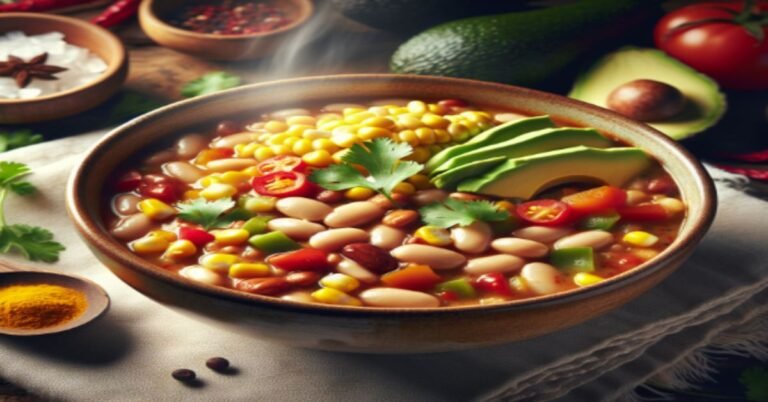How to Cook Perfect White Beans for Soups and Chilis
Are you tired of mushy, flavorless white beans in your soups and chilis? Imagine biting into perfectly cooked, creamy beans that retain their shape and elevate your dish to new heights. Achieving this culinary perfection might seem like a challenge, but fear not – we’ve got you covered!
White beans are a versatile and nutritious ingredient, packed with fiber and protein. However, many home cooks struggle to unlock their full potential. From selecting the right type of beans to mastering the cooking process, there’s an art to preparing these little legumes. In this comprehensive guide, we’ll walk you through every step of “How to Cook Perfect White Beans for Soups and Chilis” – from selection to storage, and everything in between.
Get ready to transform your bean game! We’ll explore the secrets of selecting and preparing white beans, share foolproof techniques for cooking them to perfection, and reveal tips for enhancing their flavor and texture. Along the way, we’ll troubleshoot common issues, offer versatile recipes, and discuss the nutritional benefits of these humble yet mighty beans. So, grab your apron and let’s dive into the world of white bean mastery!
Selecting and Preparing White Beans
Choosing quality dried white beans
When selecting dried white beans for your soups and chilis, it’s crucial to choose high-quality beans for the best results. Look for beans that are:
- Uniform in size and color.
- Free from cracks, discoloration, or visible damage.
- Clean and free from debris.
Before cooking, spread the beans in a shallow layer and sort through them, removing any foreign objects, broken beans, or those that appear spoiled. This initial inspection ensures you’re starting with the best possible ingredients.
Rinsing and soaking methods
Proper rinsing and soaking are essential steps in preparing white beans. Here are three recommended soaking methods:
- Hot Soak Method (Preferred):
- Reduces cooking time and gas-producing compounds.
- Results in more tender beans.
- Traditional Soak Method:
- Ideal for pressure cooking.
- Soak beans in cold water for 8 hours or overnight.
- Quick Soak Method:
- The fastest option for time-saving.
| Method | Duration | Benefits |
|---|---|---|
| Hot Soak | 2-3 hours | Tender beans, reduced cooking time |
| Traditional | 8 hours or overnight | Consistent results, good for pressure cooking |
| Quick Soak | 1 hour | Time-saving, suitable for last-minute preparations |
After soaking, always drain and rinse the beans with fresh water before cooking. This step helps remove any impurities and excess starch.
Quick soak alternative for time-saving
If you’re short on time, the Quick Soak Method offers a convenient alternative:
- Place beans in a large pot and cover with water.
- Bring to a boil for a few minutes.
- Remove from heat and let soak for one hour.
- Drain and rinse before cooking.
This method significantly reduces soaking time while still improving the beans’ texture and digestibility.
Now that we have covered the essential steps for selecting and preparing white beans, we’ll move on to the next crucial phase: Cooking White Beans to Perfection. This upcoming section will guide you through the process of transforming your prepared beans into delicious, tender morsels ready for your favorite soups and chilis.
Cooking White Beans to Perfection
Now that we’ve covered selecting and preparing white beans, let’s dive into the heart of the matter: cooking these versatile legumes to perfection. The cooking method you choose can significantly impact the texture and flavor of your white beans, whether you’re preparing them for a hearty soup or a flavorful chili.
Stovetop cooking instructions
The stovetop method is the most traditional way to cook white beans. Here’s how to do it:
- Place your soaked and rinsed beans in a large pot.
- Cover with fresh water, using 3-4 cups of water for every cup of beans.
- Add optional aromatics like onion, garlic, or bay leaves for extra flavor.
- Bring to a boil over medium-high heat.
- Reduce heat to low and simmer partially covered for 1 to 1.5 hours.
- Stir occasionally and add water if needed to keep beans submerged.
- Add salt during the last 10-15 minutes of cooking.
- Cook until beans are tender, then drain excess water.
Crockpot cooking times and techniques
For a hands-off approach, the slow cooker method is ideal:
- Add soaked beans to the crockpot.
- Cover with water or broth, about 2 inches above the beans.
- Include any desired seasonings or aromatics.
- Cook on low for 6-8 hours or on high for 3-4 hours.
- Check for tenderness and adjust seasoning before serving.
Pressure cooker and slow cooker options
| Cooking Method | Cooking Time | Benefits |
|---|---|---|
| Instant Pot | 30-40 minutes | Quick, efficient, and retains nutrients |
| Slow Cooker | 6-8 hours | Hands-off, develops rich flavors |
For the Instant Pot method:
- Add soaked beans and water to the pot.
- Use a 1:3 ratio of beans to water.
- Cook on high pressure for 30-40 minutes.
- Allow for natural pressure release.
Regardless of the method you choose, always ensure your beans are cooked until tender. The cooking time may vary depending on the age and type of beans used. With these cooking techniques mastered, you’re ready to move on to enhancing the flavor and texture of your perfectly cooked white beans, which we’ll explore in the next section.
Enhancing Flavor and Texture
Now that we’ve covered how to cook white beans to perfection, let’s explore ways to enhance their flavor and texture, elevating your soups and chilis to new heights.
Adding aromatics, herbs, and spices
White beans serve as an excellent canvas for a variety of flavors. To infuse your beans with depth and complexity, consider incorporating the following:
- Aromatics: Start by sautéing chopped onions, celery, and garlic. This classic combination, known as the “Holy Trinity” in Louisiana cuisine, forms a flavorful base for your beans.
- Herbs: Fresh or dried herbs can significantly enhance the taste profile. Try adding:
- Thyme.
- Rosemary.
- Bay leaves.
- Spices: Experiment with different spices to create unique flavor profiles:
- Creole seasoning for a Louisiana-inspired dish.
- Cayenne pepper for a spicy kick.
- Salt and black pepper for basic seasoning.
Incorporating smoked meats and vegetables
Smoked meats and vegetables can add depth and richness to your white bean dishes. Consider these options:
| Smoked Meat Options | Vegetable Additions |
|---|---|
| Ham hocks | Bell peppers |
| Andouille sausage | Tomatoes |
| Smoked turkey | Spinach |
For vegetarian alternatives, try using smoked tofu or tempeh to achieve a similar smoky flavor without meat. Also, you can try our vegetarian white bean chilli recipe.
Seasoning tips for optimal taste
To ensure your white beans are perfectly seasoned:
- Start with a small amount of salt and gradually increase to taste.
- Add acidic ingredients like citrus juices or vinegars to brighten the flavors.
- Incorporate olive oil for richness and to help carry flavors throughout the dish.
- If using canned beans, which are often pre-salted, adjust your seasoning accordingly.
- For a creamier texture, mash a portion of the cooked beans before adding them back to the pot.
Remember, the key to enhancing white beans is to layer flavors throughout the cooking process. Start with aromatics, add herbs and spices as you cook, and adjust the seasoning at the end for a perfectly balanced dish.
With these flavor-enhancing techniques in mind, we’ll next explore troubleshooting common issues that may arise when cooking white beans, ensuring your culinary creations are always a success.
Troubleshooting Common Issues
Now that we’ve covered how to enhance the flavor and texture of your white beans, let’s address some common issues you might encounter during the cooking process.
Dealing with tough or bland beans
Tough or bland beans can be a frustrating experience, especially after investing time in their preparation. To address this:
- If beans remain firm after cooking, they may be old. Always use fresh dried beans for the best results.
- Add a pinch of baking soda to the cooking water to help soften tough beans.
- For bland beans, enhance flavor by:
- Adding aromatics like garlic, fresh herbs (sage, bay leaf, thyme), and olive oil during cooking.
- Seasoning with salt after cooking to avoid toughening the beans.
Adjusting liquid levels and cooking times
Proper liquid levels and cooking times are crucial for perfectly cooked white beans:
| Cooking Method | Initial Liquid | Cooking Time | Notes |
|---|---|---|---|
| Traditional Soak | Cover with 2 inches of water | 1-3 hours | Add water as needed during cooking |
| Fast Soak | Bring to boil, then sit for 1 hour | 1-3 hours | Drain and rinse before cooking |
- Stir occasionally and add water if beans become exposed during cooking.
- Cooking time varies based on bean age; taste for tenderness periodically.
Achieving desired consistency
To achieve the perfect consistency for your white beans:
- For soups and stews: Cook beans until tender but still holding their shape.
- For pureed dips: Cook until very soft and easily mashed.
- If beans are too watery, continue cooking uncovered to reduce liquid.
- For a thicker consistency, mash a portion of the beans and return them to the pot.
Remember to taste your beans throughout the cooking process to ensure they reach your desired texture. With these troubleshooting tips in mind, you’ll be well-prepared to create delicious white bean dishes. Next, we’ll explore some versatile white bean recipes that showcase the perfect texture and flavor you’ve achieved.
Versatile White Bean Recipes
Now that we’ve covered troubleshooting common issues with cooking white beans, let’s explore some versatile recipes that showcase the delicious potential of these legumes.
White Bean Chicken Chili
This creamy and flavorful alternative to traditional beef chili is perfect for those who prefer chicken. It’s an easy-to-prepare dish ideal for busy weeknights, often utilizing convenient ingredients like rotisserie chicken.
Key components:
- White beans (cannellini or Great Northern).
- Chicken (bone-in, skinless breasts or rotisserie).
- Spices: cumin, paprika, oregano, coriander.
- Fresh ingredients: garlic, onion, lime juice.
To achieve a creamy texture, puree some of the beans with broth before adding them to the chili. This technique adds body and richness to the dish.
| Cooking Method | Preparation Steps |
|---|---|
| Stovetop | 1. Sauté onions and garlic<br>2. Add broth and spices<br>3. Simmer<br>4. Add chicken and pureed beans |
| Crockpot | 1. Combine all ingredients<br>2. Cook on low for 6-8 hours |
Customize your chili with toppings like avocado, tortilla chips, cheese, and cilantro for added flavor and texture.
Old-Fashioned White Bean Soup
This hearty vegetarian option is perfect for camping trips or cozy dinners at home. It’s easily scalable for larger groups and can be adapted for various dietary preferences.
Ingredients:
- White beans.
- Fire-roasted diced tomatoes.
- Corn.
- Green chiles.
- Vegetable broth.
- Spices: cumin, oregano, cayenne pepper.
Preparation is simple:
- Heat oil in a large pot.
- Cook onions and garlic until tender.
- Add remaining ingredients and bring to a boil.
- Reduce heat and simmer for 20-30 minutes.
Serve with cornbread for a complete meal that minimizes cleanup.
Vegetarian Options and Variations
For those looking to explore more plant-based options, consider these variations:
- Swap chicken for extra vegetables like bell peppers or zucchini in the chili recipe
- Use tomatillo salsa instead of green chiles for a tangy twist
- Experiment with different bean varieties, like navy or cannellini, for varied textures
To thicken vegetarian soups without meat, try blending a portion of the beans or adding crushed tortilla chips for a creamy consistency and subtle corn flavor.
With these versatile white bean recipes in your culinary arsenal, you’ll be well-prepared to create delicious, hearty meals for any occasion. As we move on to the next section about storing and reheating, you’ll learn how to make the most of your leftover white bean dishes, ensuring nothing goes to waste.
Storing and Reheating
Now that we’ve explored versatile white bean recipes, let’s delve into the essential aspects of storing and reheating these delicious legumes to maintain their quality and flavor.
Refrigeration guidelines
Properly storing cooked white beans is crucial for preserving their taste and ensuring food safety. Here are the key points to remember:
- Store cooked beans in an airtight container in the refrigerator.
- Refrigerate promptly, within 1-2 hours after cooking.
- Cooked beans typically last 3-5 days when refrigerated correctly.
- Avoid leaving beans at room temperature for more than two hours.
- Look out for signs of spoilage, such as unpleasant odors or white liquid surrounding the beans.
Freezing methods for future use
Freezing is an excellent option for long-term storage of cooked white beans:
- Cool beans completely before freezing.
- Divide into portion-sized containers or resealable bags.
- Label containers with the date of freezing.
- Properly frozen beans can last up to 6 months.
| Storage Method | Duration | Tips |
|---|---|---|
| Refrigeration | 3-5 days | Use an airtight container |
| Freezing | Up to 6 months | Portion before freezing |
Proper reheating techniques
When you’re ready to enjoy your stored white beans, follow these reheating guidelines:
For refrigerated beans:
-
- Reheat on the stovetop, adding a bit of stock for flavor and consistency.
- Ensure beans are heated thoroughly before serving.
For frozen beans:
-
- Thaw in the refrigerator overnight.
- Heat on the stovetop, adding stock if needed to thin the consistency.
- Avoid microwaving, as it may lead to uneven heating and affect the texture.
Remember that while the texture and flavor of beans may change slightly after freezing and reheating, they remain a convenient and nutritious ingredient for your meals.
With proper storage and reheating techniques in mind, you can confidently prepare larger batches of white beans for future use. Next, we’ll explore the nutritional benefits and various uses of white beans, further highlighting their versatility in your culinary repertoire.
Nutritional Benefits and Uses
Now that we’ve covered how to store and reheat white beans, let’s explore their nutritional benefits and various uses in cooking.
Health advantages of white beans
White beans, including cannellini beans, are nutritional powerhouses that offer numerous health benefits:
- Protein-rich: One cup of cooked large white beans provides 17.4g of protein (35% Daily Value), supporting muscle growth and repair.
- Fiber-packed: With 11.3g of dietary fiber per cup (40% DV), white beans promote digestive health and help maintain stable blood sugar levels.
- Mineral-dense: White beans are excellent sources of:
- Iron: 6.6mg (37% DV).
- Calcium: 161.1mg (12% DV).
- Potassium: 1004.2mg (21% DV).
- Vitamin-rich: They contain significant amounts of thiamin, riboflavin, and folate (36% DV).
| Nutrient | Amount per cup | % Daily Value |
|---|---|---|
| Calories | 249 | – |
| Protein | 17.4g | 35% |
| Fiber | 11.3g | 40% |
| Iron | 6.6mg | 37% |
| Folate | 145mcg | 36% |
Incorporating beans into various dishes
White beans’ mild flavor and creamy texture make them versatile ingredients in many recipes:
- Soups and stews: Add white beans to hearty soups like pasta e fagioli.
- Salads: Toss cooked beans into cold salads for extra protein and fiber.
- Dips and spreads: Mash white beans to create creamy dips or sandwich spreads.
- Italian cuisine: Use cannellini beans in traditional Italian dishes for authentic flavor.
- Chili: Incorporate white beans into vegetarian or meat-based chili recipes.
Substitutions and alternatives
When white beans aren’t available or suitable, consider these alternatives:
- Other bean varieties: Navy beans, Great Northern beans, or lima beans can often be substituted in recipes calling for white beans.
- For low-FODMAP diets: Individuals with IBS or following low-FODMAP diets may need to avoid white beans. Consult a healthcare provider for suitable alternatives.
- Fresh vs. canned: While fresh white beans are available in late summer at farmers’ markets, canned or dried options offer year-round convenience. Rinse canned beans to reduce sodium content.
By incorporating white beans into your diet, you can enjoy their numerous health benefits while adding versatility and nutrition to your meals.
Mastering the art of cooking perfect white beans opens up a world of culinary possibilities. From selecting quality dried beans to enhancing their flavor with aromatics and spices, you now know how to create delicious soups, chilis, and other hearty dishes. Remember to soak your beans for optimal results, monitor cooking times and liquid levels, and experiment with different seasonings to find your perfect combination.
Whether you’re preparing a comforting White Bean Chicken Chili or a classic Old Fashioned White Bean Soup, these versatile legumes offer both nutritional benefits and culinary versatility. Don’t be afraid to get creative in the kitchen, adjusting recipes to suit your taste preferences and dietary needs. With proper storage and reheating techniques, you can enjoy your white bean creations for days to come. So grab a bag of dried white beans and start cooking – your next favorite meal awaits!

